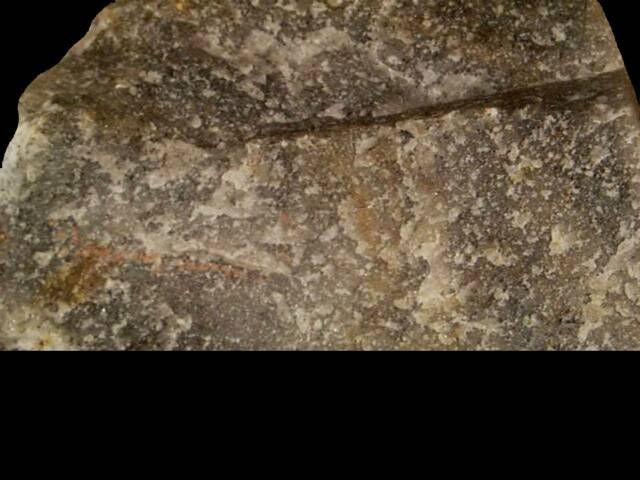Quartzite [or Metaquartzite] is a hard, non-foliated metamorphic rock which was originally pure quartz sandstone. Sandstone is converted into quartzite through heating and pressure usually related to tectonic compression within orogenic belts. Pure quartzite is usually white to grey, though quartzites often occur in various shades of pink and red due to varying amounts of iron oxide (Fe2O3). Other colors, such as yellow, green, blue and orange, are due to other mineral impurities. When sandstone is cemented to quartzite, the individual quartz grains recrystallize along with the former cementing material to form an interlocking mosaic of quartz crystals. Most or all of the original texture and sedimentary structures of the sandstone are erased by metamorphism. The grainy, sandpaper-like surface becomes glassy in appearance. Minor amounts of former cementing materials, iron oxide, silica, carbonate and clay, often migrate during recrystallization and metamorphosis. This causes streaks and lenses to form within the quartzite. Quartzite is very resistant to chemical weathering and often forms ridges and resistant hilltops. The nearly pure silica content of the rock provides little for soil, therefore, the quartzite ridges are often bare or covered only with a very thin layer of soil and little (if any) vegetation.
